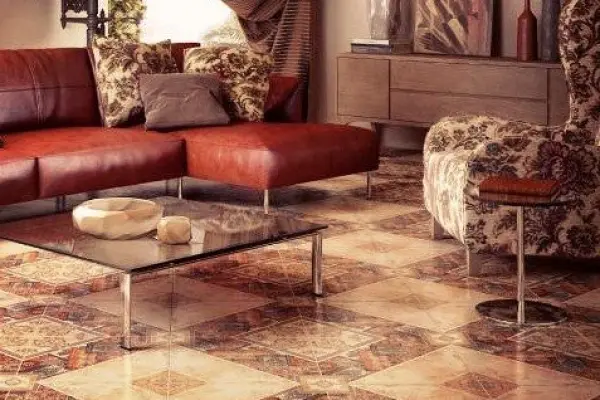Clinker tiles are currently one of the most sought-after materials for facade cladding and interior finishing. According to industry analysts, in 2025, the demand for this durable facade material has shown steady growth due to its unique characteristics. What makes clinker tiles so popular? High strength, frost resistance, and eco-friendly home cladding without the need for frequent repairs. In practice, I often notice that clients initially consider cheaper alternatives but reconsider their decision after studying clinker’s properties.
Facade clinker tiles are made from special shale clay at temperatures of 1000-1200°C. This process creates a material with water absorption of 3-8% and frost resistance of up to 200-300 freeze-thaw cycles. It should be noted that such performance is unattainable for standard ceramics. Thus, clinker tiles mimicking brick become a reliable alternative to traditional brickwork, especially when reducing the load on the foundation is necessary.
“With proper installation, clinker tiles last 40-60 years without losing their appearance. It’s an investment for decades, not years.” – Mikhail Petrov, construction materials technologist
What Are Clinker Tiles: Production Technology
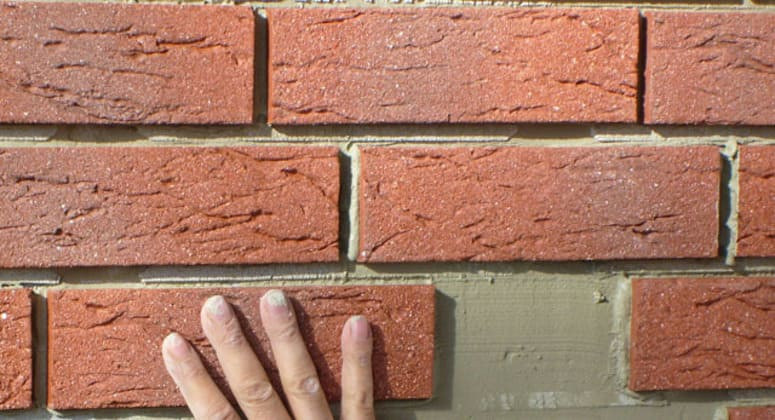 Clinker production is based on firing refractory clay without chemical additives. The process involves several stages as outlined in technological specifics of clinker brick production developed by Ukrainian scientists. Molding is done through extrusion or pressing. Not everyone is aware of these nuances. But they determine the quality.
Clinker production is based on firing refractory clay without chemical additives. The process involves several stages as outlined in technological specifics of clinker brick production developed by Ukrainian scientists. Molding is done through extrusion or pressing. Not everyone is aware of these nuances. But they determine the quality.
It should be noted that the temperature regime is critical for material quality. At 1000-1200°C firing, the clay fuses into a homogeneous structure, like metal in a smelting furnace, resulting in a material of exceptional density. The result is a material with a density of 1900-2000 kg/m³, ensuring clinker tile production technology rooted in centuries-old traditions.
In my work with private clients, I often encounter questions about the difference from porcelain tiles. Clinker tiles have fundamentally different characteristics: fewer pores, higher frost resistance, and natural colors without artificial dyes. It is known that clinker bricks are an alternative to regular ceramics precisely due to these properties.
Clinker Tiles: Types and Applications
Several types are distinguished by purpose, each with specific characteristics:
- Facade – for exterior building cladding, 8-15 mm thick
- Floor – for interiors and terraces, 12-20 mm thick
- Paving – for pathway paving, 18-52 mm thick
- Technical – for industrial facilities with enhanced strength
The correct choice of clinker type determines the lifespan and effectiveness of the cladding. Ceramic tiles for exterior finishing require specific properties. Clinker tiles for facades provide protection from atmospheric conditions for many years.
At one site last season, we used clinker tiles for the plinth of a private house. The result exceeded expectations – no changes in appearance after a year of use.
Comparative technical characteristics of different clinker types help choose the optimal option:
| Clinker Type | Thickness, mm | Water Absorption, % | Frost Resistance, Cycles | Application |
|---|---|---|---|---|
| Facade | 8-15 | 3-6 | 150-200 | Wall cladding |
| Floor | 12-20 | 4-8 | 100-150 | Floors, steps |
| Paving | 18-52 | 5-8 | 200-300 | Pathway paving |
| Technical | 15-30 | 2-5 | 300+ | Industrial facilities |
This classification allows precise determination of the required material characteristics based on operating conditions and loads.
Clinker Tiles: Advantages and Disadvantages
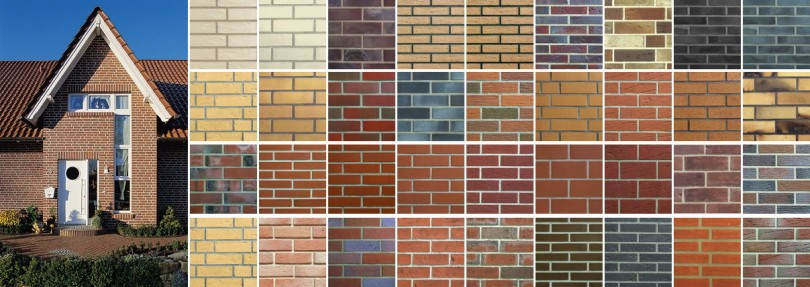 The material’s main advantages make it a leader among cladding coverings:
The material’s main advantages make it a leader among cladding coverings:
- Frost-resistant tiles withstand up to 200-300 freeze-thaw cycles
- Eco-friendliness – no harmful substances in the composition
- Resistance to UV radiation and chemical exposure
- Heat resistance up to 800°C during use
- Water absorption of 3-8% per international standards
These characteristics explain clinker’s growing popularity in modern construction. Clinker tiles also have disadvantages. High cost – from $15-25 per m² compared to $8-12 for regular ceramics. Fragility during transportation requires careful handling.
“Clinker is like fine wine: expensive initially, but it only grows in value over time. In 20 years, you’ll forget the price but enjoy the quality every day.” – Anna Vasilyeva, architect
In one recent project, a client doubted the feasibility of choosing clinker due to its cost. Three years later, he thanked me for my insistence – a neighboring house with regular tiles already needed facade repairs.
Clinker Tiles: Technology and Installation
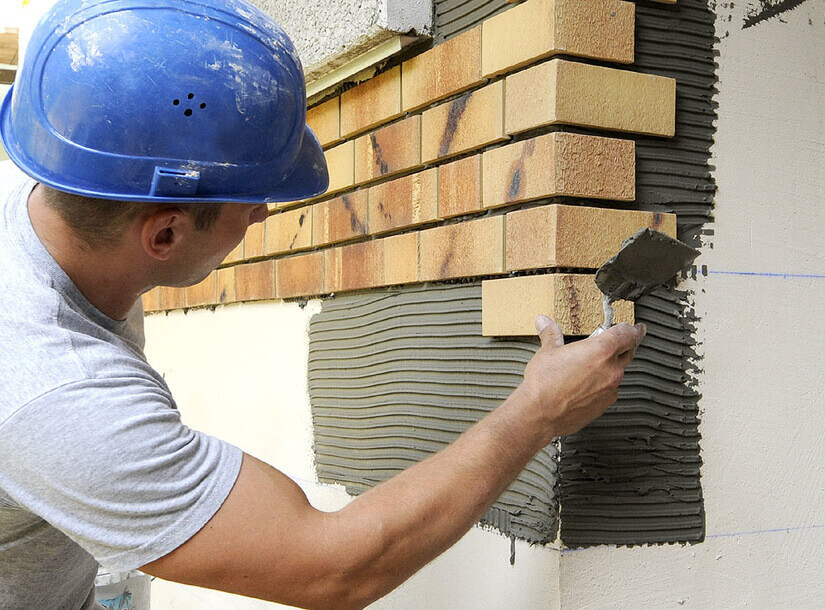 Clinker tile installation requires adherence to specific rules. The surface must be perfectly flat with deviations of no more than 3 mm per meter. Base moisture – less than 4%.
Clinker tile installation requires adherence to specific rules. The surface must be perfectly flat with deviations of no more than 3 mm per meter. Base moisture – less than 4%.
Main work stages:
- Base preparation and priming
- Layout marking and planning
- Applying adhesive with a notched trowel
- Installation with 8-12 mm joint control
- Grouting joints after 24-48 hours
Clinker tile installation is performed at temperatures of +5...+30°C. It’s crucial to protect fresh cladding from rain and direct sunlight. In practice, I often notice errors in adhesive selection – special compounds for clinker are required.
Considering clinker’s structural features, joints should be wider than usual. This compensates for thermal expansion and ensures cladding durability.
Clinker Tiles: Interior Finishing
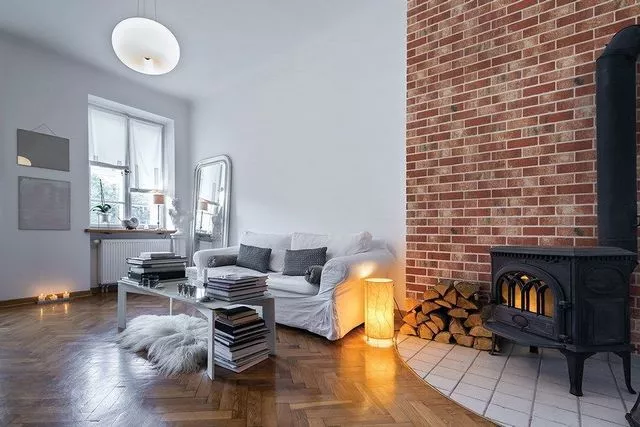 Facade cladding tiles are not clinker’s only application. Inside premises, the material creates a unique atmosphere.
Facade cladding tiles are not clinker’s only application. Inside premises, the material creates a unique atmosphere.
Popular Interior Solutions
Thinner 8-12 mm options are used for interiors. A graphite-colored clinker kitchen backsplash pairs beautifully with a wooden countertop – it’s resistant to splashes and easy to clean. A fireplace clad in clinker mimicking old brick becomes the centerpiece of a loft-style living room.
Choosing the right shade isn’t always easy. But it’s effective. In hallways, clinker protects walls from dirt and creates an impression of solidity.
Clinker Thermal Panels
Clinker tile thermal panels (panels combining an insulating layer with clinker facing) integrate insulation and decorative finishing. According to comparative lifecycle analysis of ETICS and ventilated facade systems, such solutions show high energy efficiency. The system addresses two tasks in one step: insulation and facade cladding.
“Installed clinker thermal panels at the dacha in 2023. Winter heating savings reached about 40%. The facade looks like a $200,000 brick house, but we spent only $15,000 on materials.” – Vladimir K., homeowner
Common Mistakes When Working with Clinker
Practice reveals several common mistakes that reduce cladding quality:
Incorrect Adhesive Selection
Regular tile adhesive is unsuitable for clinker. Special compounds with high adhesion to low-porosity surfaces are needed. Saving on adhesive leads to tile detachment within 2-3 years. In a recent project, a client insisted on using $3-per-bag adhesive instead of the recommended $7 one – a year later, half the facade needed redoing.
Joint Technology Violations
Joints smaller than 10 mm don’t compensate for thermal deformations. Clinker tile installation requires strict adherence to joint sizes. Overly wide joints (over 20 mm) weaken the structure, and failure to maintain horizontality leads to “waves” on the facade. Considering clinker’s structural features, proper joint geometry is critical for cladding longevity.
Base Preparation Errors
Installation on an uneven base with deviations exceeding 5 mm per 2 meters creates stress in the adhesive layer. Clinker tile installation on a poorly prepared surface is doomed to fail. Insufficient priming reduces adhesion by 40-50%. Thus, saving on preparatory work results in costly repairs in a few years.
Clinker Tile Maintenance and Operation
.jpg)
Regular Cleaning
Clinker is cleaned with pressurized water or a soft brush. Use pH-neutral detergents to remove dirt. Acidic or alkaline compounds can damage joint grout.
Minor Defect Repairs
Small chips are filled with color-matched repair compounds. Cracks in joints are cleared and filled with new grout. Timely repairs prevent moisture penetration.
Efflorescence Prevention
White salt stains are removed with special clinker compounds. Prevention includes quality base waterproofing and using low-salt materials during installation.
Practical Tips for Selection and Purchase
Criteria for Choosing Quality Clinker
.jpg) When selecting clinker, consider several key factors. Quality is the foundation of durability. The frost resistance class must match the climatic zone, water absorption should not exceed 6% for exterior work, and color uniformity in a batch must be strictly controlled by package numbers.
When selecting clinker, consider several key factors. Quality is the foundation of durability. The frost resistance class must match the climatic zone, water absorption should not exceed 6% for exterior work, and color uniformity in a batch must be strictly controlled by package numbers.
- Frost resistance class must match the climatic zone (F150 for temperate climates, F200 for northern regions)
- Water absorption not exceeding 8% for exterior work
- Color uniformity in a batch (permissible deviations indicated on packaging)
- No cracks, chips, or efflorescence on the surface
At one site last season, builders failed to check batch numbers, resulting in noticeable shade differences. Where to buy quality clinker tiles? It’s best to contact official dealers with certificates.
Regional Application Features
In northern regions with harsh winters, choose clinker with F200+ rating and water absorption below 5%. Ceramic tiles for exterior finishing often fail under such conditions. For temperate climates, F100-150 is sufficient, but UV resistance is crucial. Climate dictates its rules. It’s known that incorrect frost resistance class selection leads to cladding destruction in the first winter.
Clinker tiles for plinths require special attention in any region. This area is most exposed to moisture and mechanical stress, so compromising on quality is unacceptable.
Pricing and Budgeting
Clinker tile prices range from $12 to $60 per m² depending on the manufacturer, characteristics, and supply region. It’s known that European brands are pricier, but their quality justifies the cost.
Example of a full calculation for a 10 m² facade in a temperate climate:
- Clinker: 11 m² × $25 = $275 (with 10% reserve)
- Special adhesive: 2 bags × $6 = $12
- Frost-resistant grout: 1 pack = $15
- Deep-penetration primer: $8
- Labor: 10 m² × $15 = $150
- Delivery and consumables: $40
- Total: about $500 for 10 m²
Key purchase recommendations to avoid mistakes and extra costs:
- Order material with a 10-15% reserve for cutting
- Check batch number consistency for color uniformity
- Verify availability of corner elements in the same collection
- Request quality and frost resistance certificates
Following these tips ensures a successful purchase and subsequent installation of quality material. In my work with clients, I notice that those who order clinker tiles for an entire project at once receive significant discounts and guaranteed color uniformity.
Comparison with Alternatives
Many wonder: clinker tiles or porcelain tiles, which is better? Each material has its features. Porcelain tiles are cheaper but less frost-resistant.
Key differences between popular exterior finishing materials are presented in a detailed comparison:
| Characteristic | Clinker | Porcelain Tiles | Natural Stone |
|---|---|---|---|
| Frost Resistance | 200+ cycles | 50-100 cycles | 100-150 cycles |
| Water Absorption | 3-8% | 0.5-3% | 2-15% |
| Price per m² | $12-60 | $8-25 | $20-80 |
| Lifespan | 40-60 years | 25-30 years | 80+ years |
Data analysis shows the optimal balance of price and performance for various application conditions.
Design Solutions and Current Trends
 In 2025, contrasting clinker combinations are popular. Dark gray clinker looks striking with white joints and wooden elements. The classic red brick shade remains in demand for country houses. Style matters. Considering current trends, clinker tiles mimicking brick allow an authentic look without the complexities of traditional brickwork.
In 2025, contrasting clinker combinations are popular. Dark gray clinker looks striking with white joints and wooden elements. The classic red brick shade remains in demand for country houses. Style matters. Considering current trends, clinker tiles mimicking brick allow an authentic look without the complexities of traditional brickwork.
Trendy solutions include texture mixes: combining smooth and rusticated clinker on one facade creates a play of light and shadow. Long-format “rigel” tiles (528×108 mm) give buildings a modern European look. This solution saves installation time and creates an impression of respectability.
“Clinker is chosen by those who understand the difference between price and value. Yes, it’s more expensive than porcelain tiles. But in 15 years, when neighbors are replacing their cladding, you’ll only be glad for your choice.” – Sergey Ivanov, foreman with 20 years of experience
Success Story: Transforming a Country House
“We bought a 1980s house with a shabby facade. Builders suggested siding for $8,000. I insisted on German Feldhaus Klinker – we spent $18,000. Neighbors thought I was crazy. Five years later, our house was valued $50,000 higher than similar ones due to its prestigious look. The clinker not only paid off but increased the property’s value. The facade still looks brand new, requiring no maintenance.” – Andrey M., country house owner
